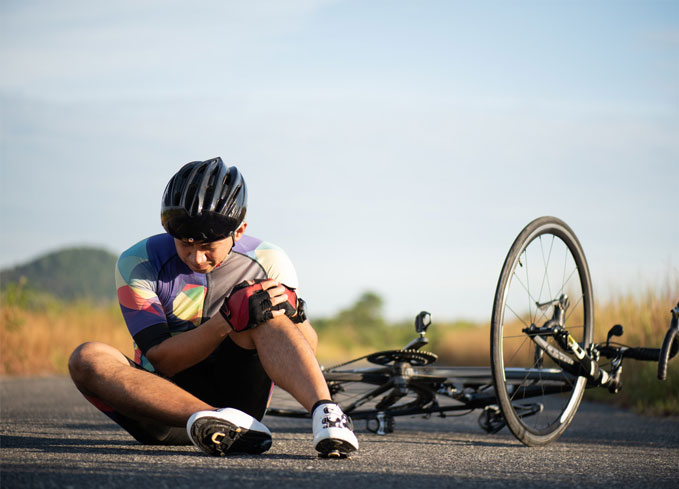Cycling is a popular and eco-friendly mode of transportation and a recreational activity enjoyed by many. However, it is crucial to prioritize safety while cycling to prevent accidents and injuries. This article highlights essential safety measures that cyclists should follow to protect themselves on the road, ensuring an enjoyable and secure cycling experience.
- Wear a Helmet: One of the most important safety practices for cyclists is wearing a properly fitted helmet. Helmets provide vital protection for the head, reducing the risk of severe head injuries in the event of a collision or fall. Always wear a helmet that meets safety standards and fasten the chin strap securely before each ride.
- Be Visible: Enhancing your visibility is key to staying safe on the road. Wear brightly colored or reflective clothing, especially during low-light conditions. Attach reflective accessories to your bike, such as reflective tape or lights, to make yourself more visible to motorists and pedestrians.
- Observe Traffic Laws: Cyclists should follow the same traffic laws as motorists. Obey traffic signals, stop signs, and lane markings. Signal your intentions to others by using hand signals when turning or changing lanes. Yield to pedestrians and share the road responsibly with other vehicles.
- Ride Predictably and Be Alert: Maintain a consistent and predictable riding pattern to help motorists anticipate your movements. Avoid sudden swerving or darting between lanes. Stay alert at all times, keeping an eye on the road ahead, checking blind spots, and listening for approaching vehicles. Avoid distractions such as using mobile devices while cycling.
- Use Bike Lanes and Paths: Whenever available, utilize designated bike lanes or paths for added safety. These dedicated spaces provide a separation between cyclists and motor vehicles, reducing the risk of accidents. Follow the directional flow and yield to pedestrians in shared pathways.
- Be Cautious at Intersections: Intersections are potential hotspots for accidents. Exercise extra caution when approaching and crossing intersections. Make eye contact with drivers to ensure they have seen you before proceeding. Avoid riding in drivers’ blind spots and watch for turning vehicles.
- Ride defensively: Assume that motorists may not see you and anticipate potential hazards. Be aware of parked cars and watch for opening doors. Maintain a safe distance from larger vehicles, giving them ample space to maneuver. Be prepared to react quickly to unexpected situations.
- Maintain Your Bike: Regularly inspect and maintain your bicycle to ensure it is in good working condition. Check the brakes, tires, lights, and other components before each ride. Properly inflate tires, and ensure the bike is well-lubricated. If you are unsure about maintenance, consult a professional bike shop.
- Ride with Others: Cycling with a group or a partner can enhance safety. Riding in a group makes cyclists more visible to motorists and provides support in case of an emergency. Additionally, group rides can be a great way to share knowledge and experiences while fostering a sense of community.
- Continuously Improve Your Skills: Consider taking cycling safety courses or workshops to enhance your knowledge and skills. These courses can provide valuable insights on defensive cycling, traffic strategies, and emergency maneuvers, making you a more confident and skilled cyclist.
Conclusion: Prioritizing safety while cycling is paramount to protect yourself on the road. By wearing a helmet, increasing visibility, following traffic laws, being alert, and taking necessary precautions, you can significantly reduce the risk of accidents and enjoy the many benefits of cycling. Remember, safe cycling practices not only safeguard your well-being but also contribute to creating a harmonious and secure environment for all road users.

